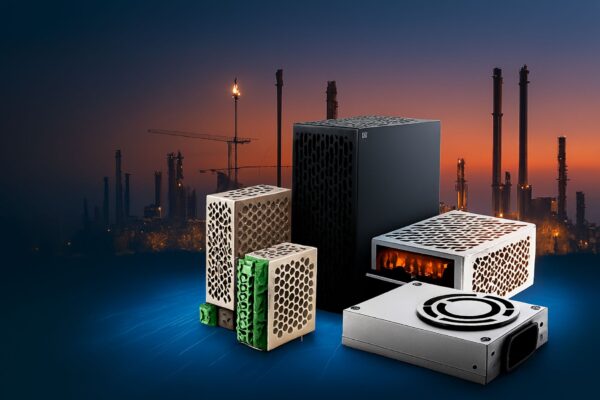
Energy Efficiency and Sustainability in Industrial Power Supply Solutions
As global industries face increasing energy demands and sustainability targets, power efficiency has become a top priority for manufacturers, datacenters, and automation sectors. The push toward energy-efficient and sustainable industrial power supply systems is not just about reducing operational costs it is about achieving long-term reliability, compliance with environmental standards, and supporting global decarbonization goals.
At Wired and Wireless Technologies (WAWT), we continuously monitor technological advancements and market trends that drive innovation in the AC-DC, DC-DC, SMPS, and linear power supply sectors. Our insights reveal how companies are integrating smarter, cleaner, and more efficient power systems to align with sustainability objectives while maintaining optimal performance.
The Growing Need for Energy Efficiency
Industrial power supply systems are the backbone of modern production and automation environments. However, traditional systems often operate with lower efficiency, resulting in significant energy losses, excess heat generation, and higher carbon emissions.
With industries under increasing regulatory and environmental pressure, improving energy efficiency has become a necessity. High-efficiency power supplies now reaching efficiency levels exceeding 95% not only save energy but also reduce cooling requirements and extend the life of equipment.
Moreover, energy-efficient designs directly impact a company’s bottom line by reducing electricity costs and improving overall system reliability. This growing awareness is reshaping how businesses approach their power infrastructure, making sustainability a strategic advantage rather than an afterthought.
Key Technologies Enabling Energy Efficiency
Modern industrial systems are embracing advanced technologies to enhance performance and minimize waste. Below are some of the most influential innovations transforming the landscape:
1. Power Factor Correction (PFC)
PFC ensures that electrical energy drawn from the grid is used effectively. By reducing reactive power and maintaining a near-unity power factor, active PFC circuits significantly improve energy utilization. This leads to better compliance with international efficiency standards such as IEC 61000-3-2, while also reducing stress on the electrical grid.
2. Digital Power Management
The shift from analog to digital control systems allows for real-time monitoring, data logging, and adaptive regulation. Digital controllers enable smarter energy management by adjusting output according to load conditions, optimizing performance, and predicting potential failures before they occur.
3. GaN and SiC Power Devices
The introduction of wide bandgap (WBG) semiconductors such as Gallium Nitride (GaN) and Silicon Carbide (SiC) has been revolutionary. These materials support higher switching frequencies, lower losses, and greater thermal efficiency compared to traditional silicon-based devices. As a result, they are becoming critical components in next-generation power supplies used in industrial automation, renewable energy, and electric vehicles.
4. Advanced Converter Topologies
High-efficiency topologies like LLC resonant converters, bridgeless PFC circuits, and synchronous rectification techniques are now standard in industrial applications. These designs help reduce conduction and switching losses, improve thermal performance, and support compact, lightweight designs suitable for high-density applications.
Implementing a Sustainable Energy Strategy
For industrial organizations aiming to become more energy-efficient, a structured and data-driven strategy is essential. Implementing energy-efficient systems goes beyond upgrading components it involves an integrated approach across processes, design, and monitoring.
Some key steps include:
- Conducting Energy Audits: Identify inefficiencies in existing power systems, assess energy usage patterns, and quantify potential savings.
- Upgrading to High-Efficiency Power Supplies: Replace outdated systems with modern AC-DC or DC-DC units that offer higher conversion efficiency and lower standby losses.
- Incorporating Smart Monitoring Tools: Real-time data analytics and predictive maintenance systems help minimize downtime and optimize energy performance.
- Integrating Renewable Energy Sources: Hybrid power setups that combine traditional and renewable energy can further reduce dependency on fossil fuels.
- Establishing Strategic Partnerships: Collaborating with expert research and insight companies like WAWT ensures access to reliable data, technology trend analysis, and vendor comparisons that inform sustainable decision-making.
By combining these measures, organizations can achieve both operational efficiency and environmental responsibility a dual goal that defines modern industrial excellence.
The Road Ahead: Smart and Sustainable Power Systems
As industries evolve toward automation, electrification, and digital transformation, energy efficiency will remain a cornerstone of progress. Governments and corporations worldwide are setting ambitious net-zero targets, prompting continuous innovation in the power electronics industry.
Future industrial power systems will likely feature AI-driven energy management, self-healing grids, and IoT-enabled monitoring to achieve real-time optimization. In this environment, energy efficiency and sustainability are not optional they are prerequisites for growth, competitiveness, and compliance.
The convergence of technology trends such as wide bandgap semiconductors, renewable integration, and smart power architectures will redefine how industries approach energy consumption and power reliability. WAWT continues to track and analyze these developments to help stakeholders anticipate market shifts and make strategic, informed choices.
About WAWT
Wired and Wireless Technologies (WAWT) is a global research, insight, and strategy firm specializing in the power supply and wireless power markets. Our dedicated intelligence solution, Power Supply Market Intelligence, provides comprehensive coverage of key market areas including AC-DC, DC-DC, SMPS, and linear power supplies.
Our flagship reports include:
- AC-DC and DC-DC Merchant Power Supply Market Report
- External Power Adapters & Chargers Market Report
- Application-Specific Power Supply Reports for sectors like datacenters, medical, railway, and industrial automation
- Vendor market share rankings and competitive insights
WAWT helps businesses understand evolving technology trends, vendor dynamics, and regional market shifts, enabling data-driven decisions and sustainable growth.
Our brochure and sample reports highlighting the scope and coverage of our research solutions.
Stay connected with the latest developments in power technology by subscribing to our Power Bulletin Newsletter a monthly e-newsletter providing exclusive insights, forecasts, and expert commentary.